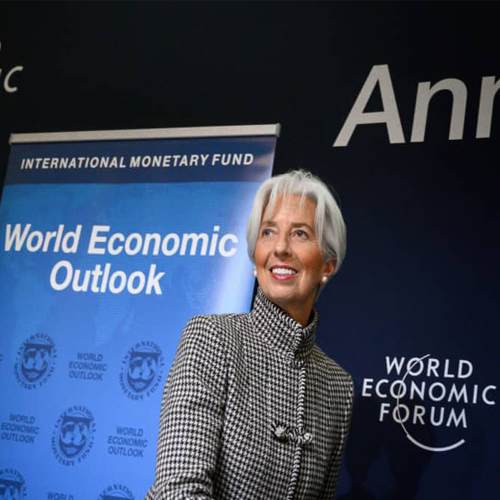
Fears of another global economic slowdown are rising as reliable data indicates the United States — the world’s largest economy — may be headed for another recession. CNBC called it a “recession warning,” while the Street said it “sparked recession fears” and Bloomberg noted ominously that the same thing was happening in the UK “as ‘Doom and Gloom’ spreads.” Gold is at a six-year high. Copper prices, a proxy for industrial health, are down sharply. Oil prices have sunk to $60 a barrel.
It’s probably good for policymakers to be at least moderately alarmed by this, because worrying about possible recessions is part of how recessions get avoided. Japan, Germany, the UK, and Brazil are seeing signs of trouble too.
This whole conversion is about fluctuations in the price of Treasury bonds, with “yield curve inversion” standing as a shorthand for the prices of different kinds of bonds arranging themselves in an unusual pattern. There are 9 key countries are on the verge of recession. China has faced the worst manufacturing output in the last 17 years, whereas Germany said that its economy actually shrank in the spring.
In Germany, the economy is shrinking, interest rates are negative all the way from overnight deposits to 30-year bonds. Germany’s economy declined in the three months before June, according to new numbers, a troubling sign for the world’s fourth-largest market. Germany relies heavily on exports, primarily to the US and China, and is now struggling to sell to those nations as their economies slow.
In Switzerland negative yields extend all the way to 50-year bonds. Even in indebted and crisis-prone Italy, a ten-year bond gets you only 1.5%. In America, meanwhile, the curve is inverted—interest rates on ten-year bonds are lower than on three-month bills—a peculiar situation that is a harbinger of recession.
When we see the global market ,what’s worse is that many of the world’s other top economies may also be headed for troubling downturns. The safe-haven dollar is up against many other currencies.
Japan faces a recession, and it’s recently entered into a nasty trade dispute with South Korea. The turmoil over Brexit has partly led the UK’s economy to shrink in the second quarter. Whereas, the growth has essentially stopped in Italy, and a political crisis there doesn’t inspire much confidence that a rebound will happen soon.
Secondly, months of protests in Hong Kong have brought the financial hub’s economy to a standstill, and the looming threat of a possible Chinese military intervention to quell the unrest isn’t making the situation any better.
Singapore, another Asian economic engine, is also on the brink of recession. Argentina just went through one of the worst stock market crashes in decades after an allegedly corrupt politician nears power once more. Brazil and Mexico, two leaders of Central and South America’s economies, are expected to perform weakly this year. On top of it, China’s growth rate has slowed due in large part to the trade war launched by President Donald Trump.
Put it all together and the world’s economic outlook looks pretty bleak. The International Monetary Fund, a world body that helps keep the global economy stable, also sees it that way. Last month, it cut its projection for global growth to 3.2 percent, the lowest rate since 2009. IMF cuts growth forecast as world economy is expected to slow in 2019 amid trade tensions. The World Bank, the OECD and other forecasters have also downgraded their world growth estimates.
Why so many countries may be headed for recession. It’s possible that some, or even all, of these countries turn around their economic fortunes soon. But experts say two major trends have caused the current slowdown — and there’s reason to believe they’ll persist in the coming years.
The first has to do with Trump’s signature economic policy. “A major reason for the elevated risk of recession,” says the American Enterprise Institute’s economic policy studies director, Michael Strain, “is President Trump’s deeply misguided trade war. If the president were to reach a face-saving deal with Chinese President Xi Jinping, the risk of recession would drop considerably.”
In the US, meanwhile, the trade war is severely hitting farmers as China has stopped buying as many agricultural products from America in retaliation for Trump’s tariffs and the US placed 25 percent tariffs on $250 billion worth of Chinese products in May, and plans to impose 10 percent tariffs on the remaining $300 billion in goods that Beijing sends to America by mid-December.
The economy of India is a developing mixed economy.It is the world's seventh-largest economy by nominal GDP and the third-largest by purchasing power parity (PPP). According to Central Statistics Office, India's GDP slowed to a five-quarter low of 6.6 per cent in October-December 2018.
It has seen a fell in the Oil prices in this weak with amid worries about a global economic slowdown, which has reduced demand for commodities such as oil.
International benchmark Brent crude futures were at $58.00 a barrel by 1044 GMT, down 53 cents from their previous settlement. With this GDP growth in India is an important issue to consider.
Lastly, India's imports of crude oil have also stalled in recent months, tallying with weaker economic growth in the country.
See What’s Next in Tech With the Fast Forward Newsletter
Tweets From @varindiamag
Nothing to see here - yet
When they Tweet, their Tweets will show up here.





























